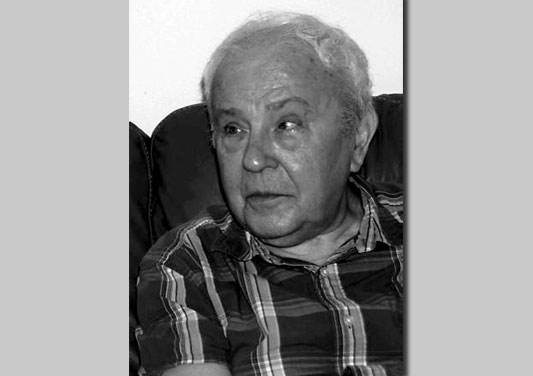4.1.2.5 The poetics of Justo Rodríguez Santos (1915 – 1999), his verses in the magazine Orígenes

Justo Rodríguez Santos was born in Santiago de Cuba in 1915 and died in New York in 1999. In addition to being a poet, he was a radio scriptwriter and contributed to various periodicals, most notably Orígenes, which published his poems in issues 15 (1947), 17 (1948), and 33 (1953). He also contributed to the magazines Verbum, Espuela de Plata, and Clavileño.
His poetic works, published in book form, include the following titles: “Elegy for the Death of Federico García Lorca,” 1936; “Captive Light,” 1937; “The Beauty that Heaven Does Not Shroud,” 1950; “The Conjured Cards,” 1979; “The Tuning Fork of the Snowdrift,” 1976; and “The Dream Operas,” 1981.
Although he shared Orígenes’ aesthetic searches, his poetics were marked by neo-romantic reminiscences and the imprint of purism itself, which he transposed into verses of closed musicality, neoclassical in their conception and with a rather conventional sensibility, without transformative discoveries that did shake the poetics of other bards of his Origenist generation.
In the anthology titled “Ten Cuban Poets,” published in 1948, Cintio Vitier includes part of his work and refers to the influence of Rafael Alberti and Federico García Lorca on his verse. He also asserts: “If we adhere to the most genuine and distinctive aspects of his poetry, it will be easy to observe how it fluctuates, always governed by the most absorbing and visible verbal complacency, between a spontaneous romanticism that coagulates in a reminiscent penumbra of images or a vaguely dreamlike unveiling, and that marine clarity, sometimes the paradisiacal color of absence, in which reverie opens to the clear murmurs of an innocent, mythological island.”
The theme of death recurs in his poetry, especially in the verses he published in the magazine Orígenes, entitled “In the Blue Arms of Death…” and “Invocation of Death,” in which death is portrayed as a panacea and also associated with beauty, albeit without great conceptual flourish. The second of the aforementioned poems culminates with these verses, which are somewhat emotionally rooted, subordinated to a purely aesthetic purpose:
“So that my soul may
reach your immaculate one,
that a smile forbids,
like a sheltered flower
of the wind that dreams of it leafless;
necessary would be
bury its strong light in the shadow,
suspend his agony…
so that he comes out to see you
in the blue arms of Death!”
An unusual note within his poetry permeates the entire text of “Unfinished Gallop,” dominated by epic poetry and an evocation of social realities that brings it closer to the avant-garde, without resorting to its verbal play. The vocabulary is mundane and resonant, far removed from purist contemplations:
“Write, write, write…
The rivers, the poets, greet you
as soon as he unties them by his tongue;
a builder,
a man with a hammer, a carpenter,
a bearded giant, a monarch
with a scepter of herbs, a poet who rises
in the middle of a crowd,
or ants crawling up your legs,
of roofs with thousands of heads
and handkerchiefs, screaming,
hearing that thunder or waterfall
that breaks or falls through its lips
tattooing the entire map of jungles and rivers,
of cities and black chimneys,
of workers who go to their jobs singing,
of beings who fornicate freely
multiplying hands and labors,
granaries, instruments, tools,
implements of farming and progress,
churches, roads, high bridges,
citizens, soldiers and poets,
moving the mountain towards dawn.”
The work of Justo Rodríguez Santos, while not entirely sharing the concerns of Orígenes, contributes to the group’s aesthetic platform from its purist conceptions, providing all the intrinsic sonority of its poetry and a vision of beauty that was above any other element that configures the poetic.








